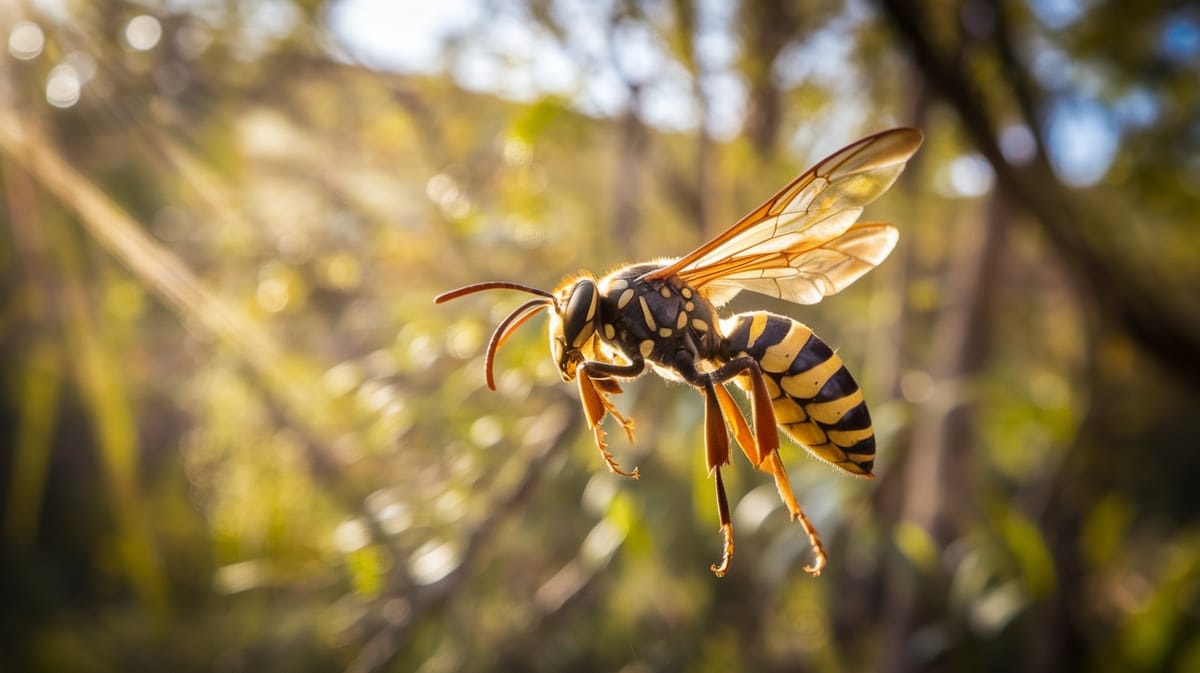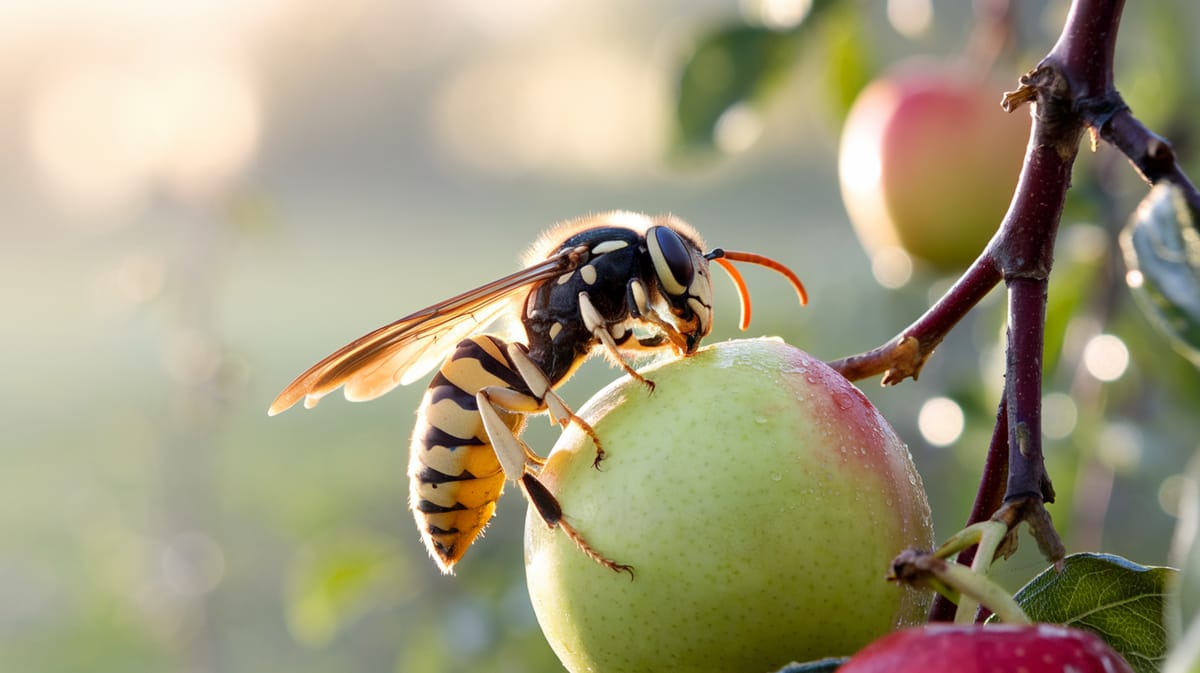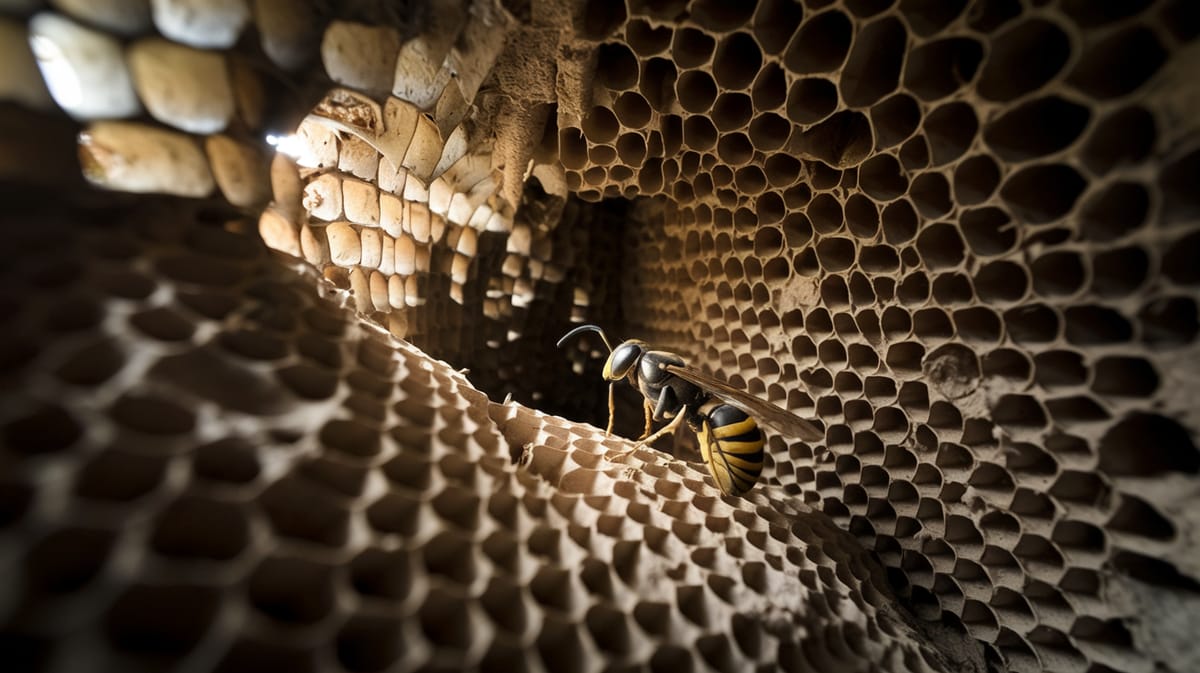Asian Giant Hornet
Fierce and formidable, the Asian Giant Hornet commands attention with its sheer size and potent sting, playing a crucial role as a top predator controlling pest populations.

Key Insights at a Glance
Did You Know?
Taxonomy & Classification
The Asian Giant Hornet, known for its formidable size and potent venom, exhibits unique social behaviors and advanced predatory adaptations. Let's understand the evolutionary journey and classification of these remarkable predators.
Global Distribution
Native to East Asia, the Asian Giant Hornet has spread to areas like North America, raising ecological concerns over its impact on local species.
Evolutionary Adaptations
Evolving from predatory ancestors, these hornets developed powerful mandibles and cooperative hunting techniques, crucial for their survival and dominance in diverse habitats.
Lifecycle and Growth
A remarkable journey of transformation from Egg to Adult.
Egg
Laid in protected cells, eggs develop rapidly, initiating the complex life cycle of the Asian Giant Hornet.
Larva
Larvae are voracious feeders, relying on workers to provide protein-rich food essential for growth and future transformation.
Pupa
Undergoing metamorphosis, pupae transform internally, preparing to emerge as winged adults with distinctive features.
Adult
Fully developed adults engage in hunting, colony defense, and reproduction, demonstrating social structure and complex behaviors.
Dietary Habits
A formidable hunter with exceptional foraging skills, this insect targets bees, larger insects, and occasionally scavenges for food.
| DIET TYPE | DESCRIPTION |
|---|---|
| Primary Diet | Primarily preys on honeybees, using its powerful mandibles to decimate hives and collect larvae. |
| Secondary Diet | Also hunts larger insects like beetles and mantises, contributing to its varied and adaptable diet. |
| Occasional | Occasionally consumes tree sap and fruit juices, especially when typical prey is scarce or during specific seasons. |

Behaviour and Adaptations
Discover the astonishing traits that make the Asian Giant Hornet a formidable insect.
Precision Hunting
Accurately targets and eliminates prey, often honeybees, with lethal efficiency.
Chemical Communication
Utilizes pheromones to coordinate large-scale attacks on nests.
Thermal Defense
Can withstand high temperatures, allowing survival during aggressive hive invasions.
Ecosystem Impact
Vital role of Asian Giant Hornets in ecosystem balance.
Natural Pest Control
Preys on pest insects, reducing populations and protecting crops.
Food Web Component
Serves as both predator and prey, maintaining ecological equilibrium.
Detritivore Aid
Helps decompose organic matter, enriching soil nutrients.
Conservation Challenges
Addressing the critical threats facing Asian Giant Hornet populations for their conservation.
Habitat Destruction
Urbanization and agriculture reduce nesting sites, impacting hornet populations.
Climate Change
Altered weather patterns disrupt hornet life cycles and ecosystems.
Invasive Species
Competition with other species threatens hornet food sources.
Frequently Asked Questions
How long do Asian Giant Hornet live?
Asian Giant Hornets typically live for 3-5 months, depending on their role in the colony. Queens have the longest lifespan, while workers and drones live shorter lives. The climate and environmental conditions can also affect their lifespan.
What do Asian Giant Hornet eat?
Asian Giant Hornets are carnivorous and feed mostly on insects, especially honeybees. They also consume tree sap and honey. In the larval stage, they are fed a protein-rich diet from prey captured by worker hornets.
Are Asian Giant Hornet poisonous?
Asian Giant Hornets are not poisonous, but their venom is highly toxic and can be dangerous to humans. Their sting can cause severe pain, allergic reactions, and in rare cases, can be fatal, especially if a person is stung multiple times.
Are Asian Giant Hornet endangered?
Asian Giant Hornets are not currently classified as endangered. They are native to parts of Asia and have stable populations there. However, they are considered invasive in other regions like North America, where they pose ecological threats.
What do Asian Giant Hornet symbolize?
In various Asian cultures, Asian Giant Hornets symbolize courage and strength due to their size and aggressive nature. They are also seen as protectors of their colony, reflecting tenacity and resilience.
Do Asian Giant Hornet bite?
Asian Giant Hornets do not bite; they sting. Their sting is potent, delivering a painful and toxic venom. The hornet uses its powerful jaws for catching and ripping apart prey, not for biting humans.
What color are Asian Giant Hornet?
Asian Giant Hornets have a distinctive color pattern. They have a yellow-orange head, dark brown or black compound eyes, and a dark body with yellow and black stripes on the abdomen. Their vibrant colors act as a warning to potential predators.
Does a Asian Giant Hornet have wings?
Yes, Asian Giant Hornets have wings. They are powerful fliers, capable of traveling several miles in search of food. Their wings are transparent with a slight brown tint, allowing them to navigate efficiently through their environment.
What does a Asian Giant Hornet look like?
Asian Giant Hornets are large, measuring about 1.5 to 2 inches long. They have a robust build, orange-yellow heads, prominent mandibles, and black and yellow striped abdomens. Their wings are transparent and they have sharp stingers.
Is a Asian Giant Hornet an insect?
Yes, the Asian Giant Hornet is an insect. It belongs to the order Hymenoptera, which includes wasps, bees, and ants. As insects, they have six legs, a segmented body, and two pairs of wings.
Related Insects
Discover insects with similar characteristics to Asian Giant Hornet - including shared habitats, diets, and taxonomic classifications
Share this profile
Help others discover Asian Giant Hornet
